9 Car Fluids To Check On a Routine Basis
Proper fluid levels are vital for vehicle longevity. Lubricating oils and coolants protect your engine and various components from wear and overheating so a sudden fluid loss can cause catastrophic failure.
Some of the easiest car maintenance tasks consist of checking these fluids. Here are the car fluids you’ll want to keep an eye on, when to check them, how to check them, and why it’s important to do so.
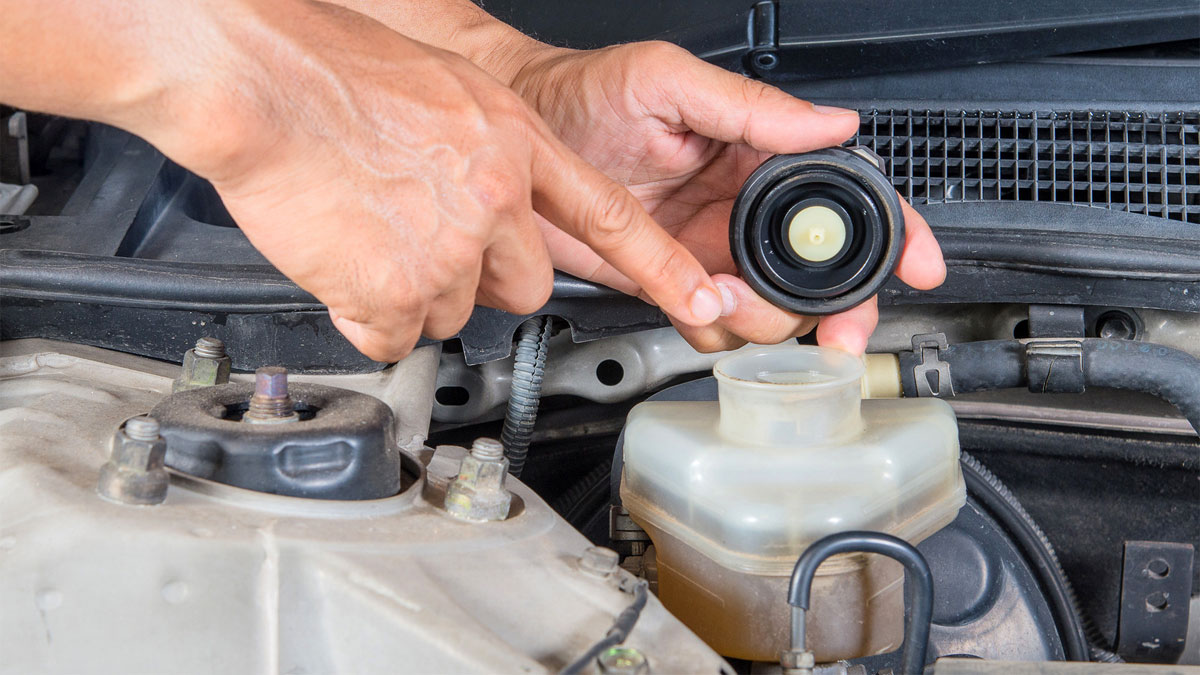
Fluids to Check In a Vehicle
The following fluids are critical to vehicle operation and should be checked on a regular basis. Under most circumstances, these fluids should also be exchanged in their entirety, at factory-specified service intervals.
While a few of these fluids are of an application-specific nature and are not found in each vehicle, the vast majority of those mentioned below are a mainstay of the automotive industry.
#1 – Engine Oil
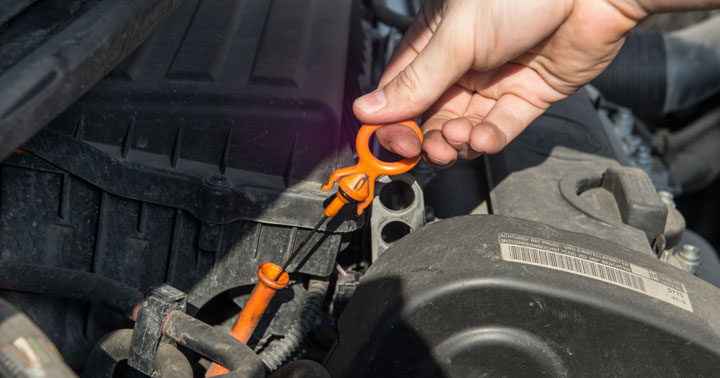
Why It’s Important
Engine oil is the lifeblood of any engine, providing critical lubrication to all moving parts and components. Fluids of this type lubricate main, rod, and camshaft bearings, as well as other moving parts within an engine’s top end.
Engine oil comes in a number of types and individual viscosities. Therefore, it is critical to use only those engine oils which have been approved by a vehicle’s manufacturer.
How Often to Check
It is always advisable to check your vehicle’s engine oil once every couple of weeks, or prior to departing on any lengthy drive. These checks should become more common in frequency as a vehicle begins to age and accumulate a higher number of miles.
How to Check
An engine’s oil level can be checked by removing and viewing its associated dipstick. Most engine oil dipsticks feature “full” and “low” designations, which prove accurate when checking oil levels when an engine is warm and turned off.
Related: Where is the Best Place to Buy Motor Oil?
#2 – Coolant/Antifreeze

Why It’s Important
A vehicle’s coolant or antifreeze is used to regulate an engine’s internal temperatures. While types and colors of coolant vary, it most commonly features an ethylene-glycol base and resists freezing even in frigid temperatures.
Furthermore, coolant or antifreeze also resists boiling until extreme temperatures are achieved. Generally speaking, this fluid serves as the medium for heat exchange between a vehicle’s engine and radiator.
How Often to Check
Coolant/antifreeze levels should be checked at least once a month, though more frequent checks are advised whenever one anticipates driving in extreme temperatures. If you suspect a leak within an engine’s cooling system, weekly checks may be necessary.
How to Check
Most vehicles now feature cooling system overflow reservoirs, which are relatively clear in nature, allowing for quick visible checks of an engine’s coolant/antifreeze.
The antifreeze/coolant in many older vehicles could be checked at the radiator itself, though extreme caution had to be exercised when doing so.
#3 – Transmission Fluid
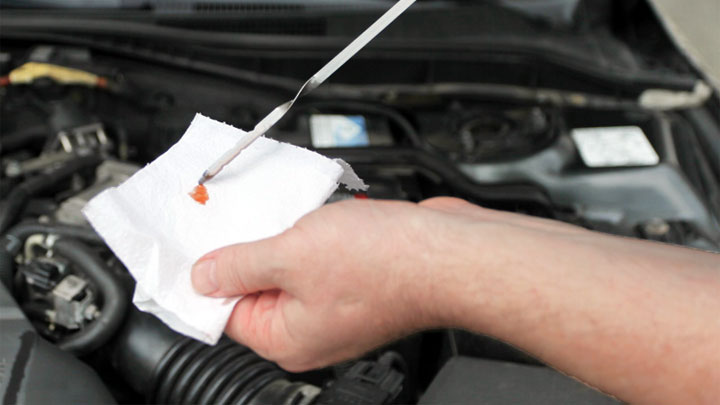
Why It’s Important
Generally speaking, transmission fluid serves multiple purposes within the transmission itself and all associated fluid circuits.
Transmission fluid not only lubricates moving parts within the transmission, but serves as a cooling medium when routed through a corresponding heat exchanger, or as the driving force within a viscous coupler when cycled through a torque converter. Too little transmission fluid is a recipe for expensive repairs, as can too much of it be.
How Often to Check
Much like engine oil, transmission fluid should be checked once every couple of weeks in newer model vehicles, or every several days in older, high-mileage vehicles. More frequent checks are also advised when system leakage is suspected.
See Also: How Often Should Transmission Fluid Be Changed?
How to Check
Many vehicles feature a transmission fluid-specific dipstick that can be used to quickly and accurately check a vehicle’s transmission fluid level. In many cases, a vehicle’s engine must be running, with the transmission in “park” or “neutral” before such checks can be conducted.
Alternatively, some vehicles feature a fluid check plug located on the transmission body itself.
#4 – Power Steering Fluid
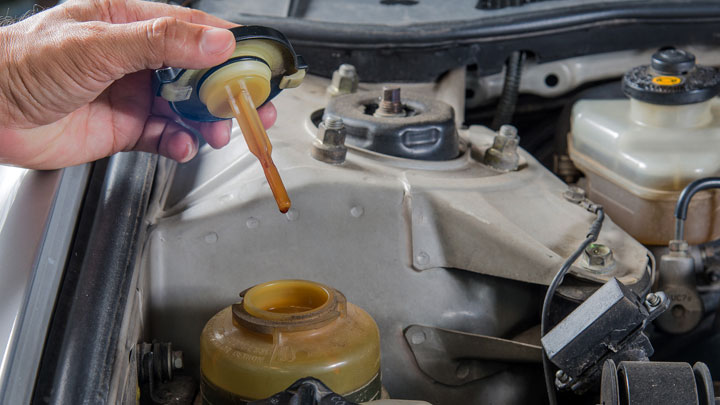
Why It’s Important
Power steering fluid is used as a hydraulic medium within a vehicle’s power steering system. This fluid is routed through a pump, into a steering rack or gearbox, when it serves to magnify the force of a driver’s steering efforts.
However, in recent years, many vehicles have begun swapping to the use of electrically actuated power steering systems.
How Often to Check
Most automakers recommend checking a vehicle’s power steering fluid no less often than once per month of operation.
As a vehicle begins to age, more frequent checks might be advised, due to the probability of line/O-ring leaks, as well as the degradation of critical structural seals.
How to Check
The vast majority of power steering systems feature a reservoir-mounted dipstick. In many cases, this dipstick is integrated into the cap for this reservoir, allowing simplified system maintenance.
Nonetheless, a number of power steering systems are sealed, requiring more extensive steps to be taken to perform these checks.
#5 – Brake Fluid
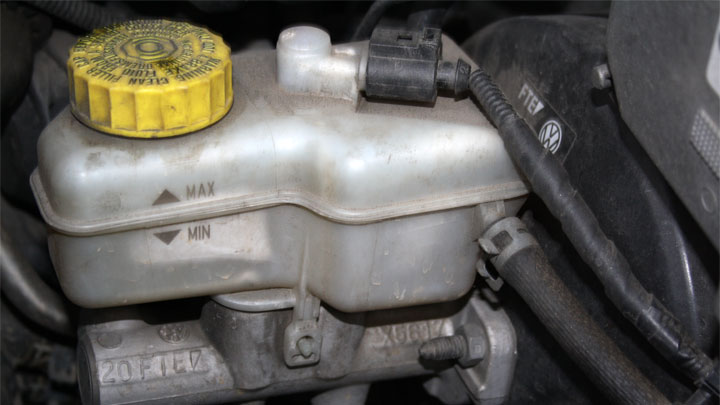
Why It’s Important
Without ample brake fluid, hydraulic brakes prove incapable of operating as intended. Brake fluid serves as the hydraulic medium used in virtually all vehicles, through which a driver’s breaking efforts are exponentially magnified.
This newly magnified force is impacted upon a vehicle’s brake shoes and/or pads, thereby greatly reducing stopping distances as a whole.
How Often to Check
It is always a good idea to check your vehicle brake fluid on a monthly basis. Doing so often allows a motorist to get a handle on minor brake system leaks before they could ultimately become a hazard to their safety.
How to Check
Virtually all vehicles feature a master cylinder-mounted brake fluid reservoir, which is often partially translucent in composition. This allows fluid levels to be analyzed and compared to “min” and “max” designations stamped into the reservoir’s body.
See Also: DOT 5 Brake Fluid Compatibility
#6 – Differential Oil
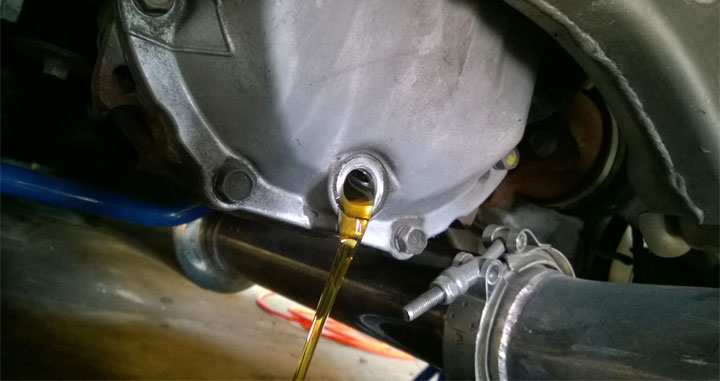
Why It’s Important
Rear Wheel Drive, 4-Wheel Drive, and All-Wheel Drive vehicles feature internally geared assemblies known simply as differentials. These assemblies transfer driveline torque to corresponding axle shafts, while also allowing each drive tire to spin at different speeds during cornering.
Differentials are filled with specialty gear oil, which provides lubrication while in operation.
See Also: 4 Types of Differentials and How They Work
How Often to Check
Differential oil or gear oil is relatively hearty and does not require inspection more often than once every 3,000-5,000 miles unless a leak is suspected. Furthermore, most differentials do not require changing this fluid until reaching approximately 30,000-60,000 miles of use.
How to Check
Virtually all differentials feature moderately-sized inset plugs, which can be removed to allow access to the assembly’s gearcase. From this plugged orifice, fluid levels can be analyzed, and fresh gear oil can be added.
#7 – Transfer Case Fluid
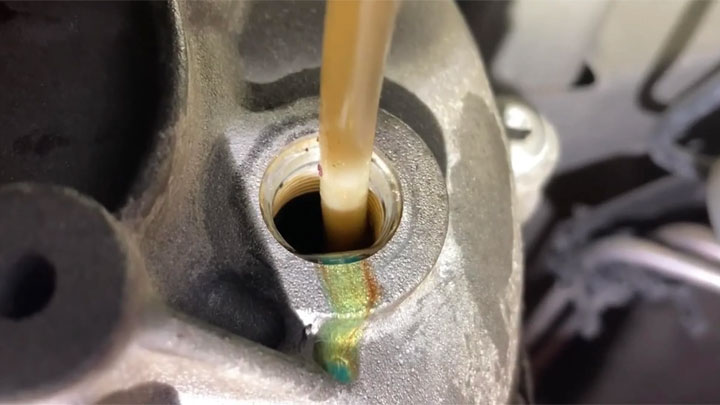
Why It’s Important
4-Wheel Drive vehicles utilize a specialty auxiliary gearbox to distribute drive power between both front and rear axles. This gearbox is referred to as a transfer case, which comes filled with specialty lubricant to prevent premature wear of all internal components.
Some manufacturers specify the use of transmission fluid within such assemblies, while others use synthetic gear oils.
How Often to Check
Transfer case oil should be checked during regular service intervals, as specified by a vehicle’s manufacturer. In most cases, these levels are checked whenever an oil change is conducted.
Furthermore, transfer case oil is generally exchanged every 40,000-60,000 miles.
How to Check
Transfer case oil can be checked via the removal of a special plum in much the same way as is standard for checking a vehicle’s differential(s). If this level is found to be below its capacity, additional transfer case oil should be added, per the manufacturer’s instructions.
#8 – Clutch Fluid
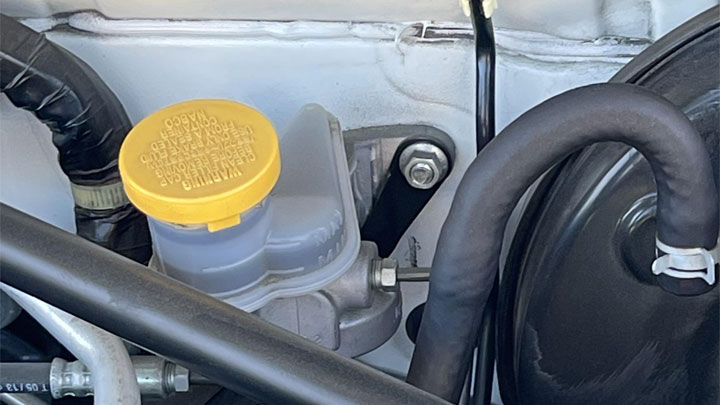
Why It’s Important
Though manual transmissions are far less common than they once were, a number of vehicles utilizing such manual gearboxes are still on the road today. Of these vehicles, most feature a hydraulic clutch.
These systems rely upon specialized clutch fluid to facilitate the operation of a corresponding slave cylinder, which is used to engage/disengage the clutch assembly itself.
How Often to Check
Most manufacturers suggest checking a vehicle’s clutch fluid once every 2-3 months, or whenever conducting standard service, whichever comes first. Of course, checks of this nature should be conducted more frequently whenever a leak is suspected.
How to Check
Much like the brake system itself, vehicles featuring a hydraulic clutch typically feature a master cylinder-mounted reservoir. This reservoir is often semi-translucent, allowing quick analysis of the fluid levels within.
If this fluid is found to be below specified levels, it should be topped off as necessary.
#9 – Windshield Washer Fluid

Why It’s Important
Washer fluid is used to clean a vehicle’s windshield and is delivered via a specialty pump and pre-mounted nozzles. Without this fluid, cleaning a vehicle’s windshield would require manual efforts, on an ever-frequent basis.
Both summer and winter washer fluids are available, as are multi-purpose all-season blends.
How Often to Check
The frequency with which washer fluid levels should be checked is directly dependent upon how often such fluids are used, due to their expendable nature.
However, it is considered common practice to replenish a vehicle’s washer fluid during every routine service interval. You’ll also want to check the condition of your wiper blades at the same time in case wiper blade replacement is needed.
How to Check
Washer fluid levels can be easily checked by glancing beneath a vehicle’s hood. In the majority of cases, a vehicle’s washer fluid tank will be semi-translucent in nature, allowing fluid levels to be analyzed both quickly and easily. A vehicle’s washer fluid can then be topped off as necessary.
See Also: Can Car Fluids Freeze In Extreme Cold?
- P0480 Code (Symptoms, Causes, and How to Fix) - Apr 19, 2024
- Car Temperature Gauge Stopped Working? (Here’s Why) - Apr 15, 2024
- Ignition Coil vs Coil Pack (What’s the Difference?) - Apr 8, 2024
